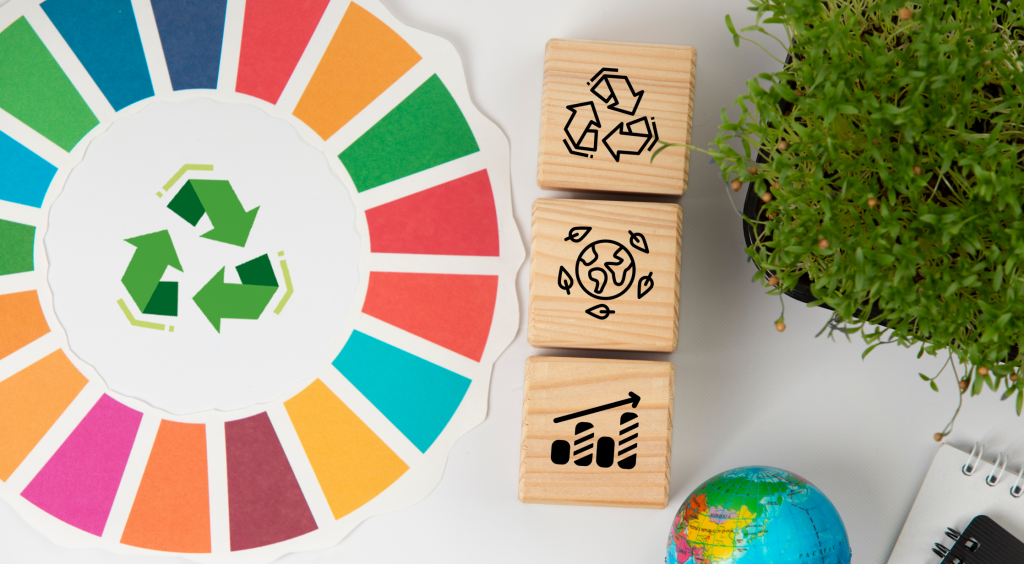Continuing with our series on the Sustainable Development Goals (SDGs), today we focus on SDG 5: Gender Equality. It’s likely one of the most familiar goals to you, as many initiatives are underway in our society to ensure gender equality.
Gender inequalities in our society are a major concern, and one way to combat them is by raising awareness among younger generations about the importance of gender equality. Therefore, in this post, we will delve into the details of this SDG and highlight resources to work on it in the classroom.
If you’ve missed any of our other posts on the SDGs, you can find them here:
If you’ve already read all of these and want to learn more about SDG 5: Gender Equality, this is your post! 😉
What are the SDGs?
The 17 SDGs, or Sustainable Development Goals, were approved at a United Nations summit held in 2015. During this meeting, the 2030 Agenda was presented, which includes these goals to address major global challenges.
Here is the list of 17 SDGs to be achieved:
- No Poverty
- Zero Hunger
- Good Health and Well-being
- Quality Education
- Gender Equality
- Clean Water and Sanitation
- Affordable and Clean Energy
- Decent Work and Economic Growth
- Industry, Innovation, and Infrastructure
- Reduced Inequalities
- Sustainable Cities and Communities
- Responsible Consumption and Production
- Climate Action
- Life Below Water
- Life on Land
- Peace, Justice, and Strong Institutions
- Partnerships for the Goals
Why work on these SDGs in the classroom?
The education sector plays a key role in shaping the future society—one that is aware of the importance of each of these goals. Moreover, students develop essential skills for their lives, such as critical thinking and problem-solving. de la importancia de todos y cada uno de estos objetivos. Además, los estudiantes desarrollan habilidades clave para su vida en sociedad, como el pensamiento crítico y la resolución de problemas.
What is SDG 5: Gender Equality about?
This is probably one of the SDGs your students are most familiar with, as there are many ways gender equality is being highlighted in today’s society.
Whether through the introduction of equal pay policies, movements like #MeToo, or global mobilizations on significant dates like March 8th, the fight for gender equality is a current and visible issue.
SDG 5: Gender Equality underscores the disparities between men and women and the need to empower all girls and women worldwide. The statistics are alarming: according to the UN, women earn 23% less than men in the labor market and spend three times as many hours on domestic work. Additionally, the Covid-19 pandemic worsened their situation, with an increase in reports of sexual violence and more hours devoted to caregiving. In some countries, female genital mutilation is still practiced, a form of physical violence that remains present today.
A society that discriminates against girls and women will struggle to progress, and it is the joint responsibility of all—citizens, institutions, politicians, etc.—to promote gender equality. This will help build a much healthier and fairer society.
Resources and Tips to Work on SDG 5: Gender Equality in the Classroom
Do you think you can contribute to raising your students’ awareness about the importance of SDG 5? The answer is yes! As a teacher, you have many tools at your disposal to work on this SDG in the classroom. Here are some tips:
- Review Classroom Materials to Avoid Bias:
Ensure that textbooks, digital resources, and examples used in class are inclusive and represent both women and men equitably. Avoid reproducing gender stereotypes, and, whenever possible, highlight women’s contributions in subject-specific fields, such as science or sports.
Tips for avoiding gender bias:
- Make sure that the texts you use in class do not perpetuate stereotypes, such as associating women with domestic tasks and men with leadership roles.
- Strive for a balanced representation of male and female role models in classroom materials.
- Choose resources and materials designed with gender equality in mind, such as those created by UNESCO or publishers committed to inclusivity.
- Incorporate This SDG Into Your Lesson Plans and Learning Situations:
Another way to contribute to gender equality in education is by designing class activities and projects that encourage reflection on this topic. When creating your lesson plans, connect them to the SDGs being covered. This will help you integrate SDG 5 into your teaching.
Examples of projects for different subjects:
- Language and Literature: Research underrepresented female authors and read some of their works.
- History: Discuss the role of women in significant historical events.
- Science: Highlight the achievements of female scientists and their contributions.
- Technology: Develop a website or app promoting gender equality.
- Economics: Organize a class debate on women’s representation in advertising.
- Share Resources With Your Students:
Here are some digital educational resources provided by the UN to openly discuss this SDG in class:
- Infographics on gender inequality worldwide.
- Interactive maps on gender-based violence globally.
- FAQs on child marriage, ideal for tackling this topic in class.
- The UN’s book club, with reading recommendations on SDG 5.
- A board game on the SDGs for kids to learn about them playfully.
Do You Have More Ideas for Working on This SDG in the Classroom?
In this post, we’ve covered some ideas, but there are countless ways to address SDG 5: Gender Equality in class. We’d love for you to share your thoughts on social media! Tell us all about it: Facebook, Twitter, Instagram and Youtube.
Additio App: The Platform for School Management, Assessment, and Communication That Puts Students at the Center of Learning
Remember, with Additio App, you can carry out competency-based assessments, putting students at the center of learning, keeping them informed about their progress, and helping them identify areas for improvement and strengths.
With over 150 features, Additio helps enhance both teaching and student learning. You can try the tool for free with the Additio Starter plan, which provides access to most features, and see if the platform truly fits your needs.
See you soon!





